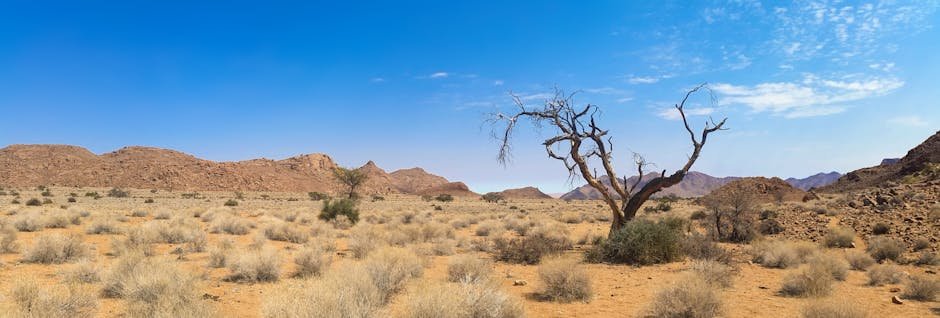Key Takeaways
- Wilderness refers to officially designated or recognized geographic areas largely untouched by human development within geopolitical boundaries.
- Wild describes regions or landscapes characterized by natural, uncontrolled conditions but may not have formal protection or status.
- Wilderness areas often have legal frameworks ensuring conservation, whereas wild areas might be unmanaged or less regulated.
- Both terms emphasize natural environments, but their geopolitical recognition and management differ significantly.
- Understanding the distinction aids in policymaking, environmental management, and territorial governance.
What is Wilderness?

Table of Contents
Wilderness is a geopolitical classification of land that remains largely free from modern human influence and infrastructure. It is often designated through legal or administrative measures to preserve its natural condition.
Legal Protection and Governance
Wilderness areas are typically protected by national or international laws aimed at conserving biodiversity and natural landscapes. For example, the United States Wilderness Act of 1964 legally defines and safeguards designated wilderness regions.
Governments or conservation organizations manage these lands to restrict activities such as mining, logging, and motorized vehicle use. This careful stewardship helps maintain ecological integrity and cultural heritage within defined boundaries.
Internationally, wilderness zones may be recognized under treaties or transboundary conservation initiatives, reflecting collaborative geopolitical efforts. Such designations help standardize protection across countries sharing significant natural habitats.
Ecological Significance and Biodiversity
Wilderness areas serve as critical refuges for endemic and endangered species due to minimal human disturbance. For instance, the Amazon Rainforest’s core zones are classified as wilderness to preserve its unparalleled biodiversity.
These regions often contain intact ecosystems that provide ecosystem services such as carbon sequestration and water regulation. Their preservation assists in combating climate change and sustaining global environmental health.
Maintaining wilderness zones also supports scientific research, allowing for baseline ecological studies in relatively pristine conditions. This data informs sustainable development and conservation policies worldwide.
Human Interaction and Cultural Value
While wilderness lands restrict development, many support indigenous communities with traditional lifestyles closely linked to the environment. These inhabitants often play crucial roles in stewardship and knowledge transmission.
Recreational activities like hiking and wildlife observation are commonly permitted but regulated to avoid ecological degradation. This controlled access balances public enjoyment with conservation priorities.
Wilderness designations can also honor cultural heritage by preserving landscapes that hold spiritual or historical significance. Such recognition fosters respect for both natural and human histories within geopolitical contexts.
Geopolitical Boundaries and Management Challenges
Defining wilderness within geopolitical boundaries requires coordination between local, regional, and national authorities. Conflicts sometimes arise when economic interests clash with conservation goals in these areas.
Cross-border wilderness zones present additional complexities, necessitating multinational agreements to ensure cohesive management. The Yellowstone-to-Yukon initiative exemplifies such transboundary collaboration.
Enforcement of wilderness protections may be challenging due to limited resources or political shifts, impacting long-term preservation efforts. Continuous monitoring and adaptive policies are essential to address these governance issues.
What is Wild?

Wild refers to lands or regions characterized by untamed natural conditions that exist largely beyond human control but may lack formal geopolitical designation. It emphasizes the inherent natural state rather than legal status.
Informal and Non-Designated Natural Areas
Wild areas can be found within or outside protected zones and often include landscapes recovering from human disturbance. For example, abandoned farmlands reverting to forest represent wild, though not wilderness, environments.
These lands may be privately owned or under local jurisdiction without explicit conservation mandates. Their wild character relies more on natural processes than regulatory frameworks.
Wild regions contribute to ecological connectivity by serving as corridors or buffers between formally protected sites. This connectivity is vital for species migration and genetic exchange.
Dynamic Natural Processes and Succession
Wild territories are frequently shaped by ongoing natural events such as wildfires, floods, or storms that restore ecological balance. These disturbances promote habitat diversity and resilience.
Because wild areas are less controlled, they allow for dynamic succession stages, supporting a mosaic of ecosystems. This variability is crucial for many species that depend on shifting habitats.
Unlike wilderness areas with strict management, wild regions may experience more frequent human influence, such as hunting or resource extraction, albeit often at low intensity. This interaction shapes their evolving character.
Perception and Cultural Connotations
The term wild often carries symbolic meanings associated with freedom, unpredictability, and raw nature. These perceptions influence cultural attitudes toward land use and conservation.
In some geopolitical contexts, wild lands are viewed as frontiers for development or as spaces for traditional livelihoods without formal protection. This duality creates diverse management challenges.
Wild landscapes may also attract adventure tourism and outdoor recreation, sometimes leading to conflicts over access and environmental impact. Balancing use and preservation remains an ongoing issue.
Role in Regional Planning and Land Use
Wild areas frequently appear in land-use planning as zones of low development priority or potential future conservation targets. Their status can shift depending on political and economic considerations.
Urban expansion or infrastructure projects sometimes encroach upon wild lands, altering their ecological functions. Policymakers must weigh short-term benefits against long-term environmental costs.
Integrating wild areas into broader spatial strategies enhances landscape resilience and supports sustainable resource management. This approach recognizes wild lands as valuable components within geopolitical frameworks.
Comparison Table
The table below contrasts key aspects of Wilderness and Wild within geopolitical boundaries to highlight their distinct roles and characteristics.
| Parameter of Comparison | Wilderness | Wild |
|---|---|---|
| Legal Status | Formally designated and legally protected | Generally lacks official recognition or protection |
| Management Approach | Strict regulatory oversight with conservation mandates | Often unmanaged or subject to informal controls |
| Human Access | Restricted and regulated to minimize impact | Access varies; can be open or lightly controlled |
| Ecological Stability | Maintained through active preservation efforts | Subject to natural disturbances and succession |
| Role in Biodiversity Conservation | Critical strongholds for endangered species | Supports habitat connectivity and diversity |
| Cultural and Indigenous Presence | Often includes indigenous stewardship with formal recognition | May harbor traditional activities without official status |
| Geopolitical Coordination | Requires inter-agency and international collaboration | Management usually localized and less coordinated |
| Economic Activities | Prohibited or highly restricted (e.g., no mining) | May allow low-intensity use such as hunting or gathering |
| Scientific Research | Facilitated and prioritized for baseline ecological data | Research opportunities exist but less regulated |
| Landscape Role | Core conservation zones within geopolitical maps | Buffers, corridors, or transition zones in land use |
Key Differences
- Legal Recognition — Wilderness areas have formal legal protection, whereas wild areas generally do not possess such status.
- Management Intensity — Wilderness is actively managed to preserve natural conditions, while wild regions may be unmanaged or lightly managed.
- Human Impact Regulation — Access and activities in wilderness are strictly controlled; wild areas may experience variable human use.
- Geopolitical Coordination — Wilderness often involves multi-level governance agreements,